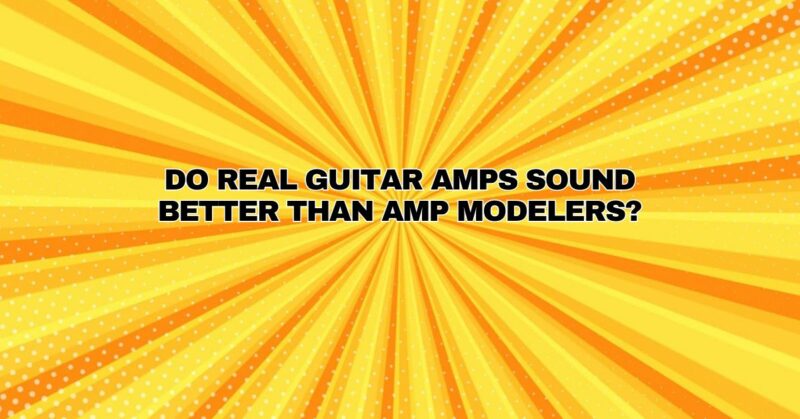The eternal debate between real guitar amplifiers and amp modelers has divided the guitar-playing community for years. Each option has its advocates, and the choice often comes down to personal preferences, practicality, and the specific demands of a guitarist’s playing style and context. In this article, we will explore the strengths and weaknesses of both real guitar amplifiers and amp modelers to help you understand whether one truly sounds better than the other.
Real Guitar Amplifiers: The Analog Legacy
Traditional guitar amplifiers, especially those powered by vacuum tubes (valves), have a rich history in shaping the sound of modern music. Here are some key aspects of real guitar amplifiers:
1. Analog Warmth and Character:
Tube amplifiers are renowned for their warm, organic, and harmonically rich tones. The inherent imperfections and nonlinearities of analog components, such as tubes, transformers, and speakers, contribute to their unique and often sought-after sound.
2. Responsive Dynamics:
Tube amps are highly responsive to a player’s touch and dynamics. They offer natural compression and saturation when pushed, allowing for expressive playing and a dynamic range of tones.
3. Tactile Experience:
Playing through a physical amp provides a tactile experience that many guitarists cherish. The feel of the controls, the immediate interaction with the amp, and the sound resonating from the speaker create a direct connection between player and instrument.
4. Vintage and Classic Tones:
For those seeking vintage and classic guitar tones, nothing quite matches the authenticity of a genuine tube amplifier. Many iconic rock, blues, and jazz recordings were made using tube amps, and these tones are deeply ingrained in the history of music.
Amp Modelers: The Digital Revolution
Amp modelers, also known as digital amp simulators or amp profilers, have experienced significant advancements in recent years. Here are some compelling aspects of amp modelers:
1. Versatility and Portability:
Digital modeling technology offers a vast range of amp models, effects, and tone-shaping tools in a single unit. Guitarists can access a world of tones and effects without the need for multiple physical amps and pedals. Additionally, amp modelers are portable and convenient for home recording and live performances.
2. Precision and Consistency:
Digital modeling allows for precise replication of amp and effect settings, ensuring consistency from one performance or recording session to another. This eliminates concerns about tube wear and component aging affecting the sound.
3. Cost-Effectiveness:
Digital solutions are often more cost-effective than purchasing multiple physical amps and effects pedals. They also offer a low barrier to entry for musicians on a budget.
4. Recording and Integration:
Amp modelers seamlessly integrate with recording software, making them an excellent choice for home studio enthusiasts. They provide direct access to a wide range of recording-friendly features and can be easily incorporated into a digital audio workstation (DAW) workflow.
Conclusion:
The “better” sound quality between real guitar amplifiers and amp modelers is a subjective matter, deeply influenced by individual preferences, musical goals, and playing context:
- Real Guitar Amplifiers: Ideal for those who prioritize analog warmth, authenticity, and a vintage feel. Tube amps excel in situations where tactile experience and the unique characteristics of analog components are valued.
- Amp Modelers: Suited for versatility, convenience, cost-effectiveness, and precision. Digital modeling technology shines in scenarios where a wide range of tones and effects are required, making it a popular choice for gigging and recording.
Ultimately, the right choice depends on your specific musical objectives and personal taste. Many guitarists find that a combination of both options, sometimes referred to as a “hybrid” setup, provides the best of both worlds. It allows them to harness the richness of analog tone when desired and the versatility of digital technology when practicality and variety are essential. In the end, it’s the sound that speaks to you and enhances your musical journey that matters most.


